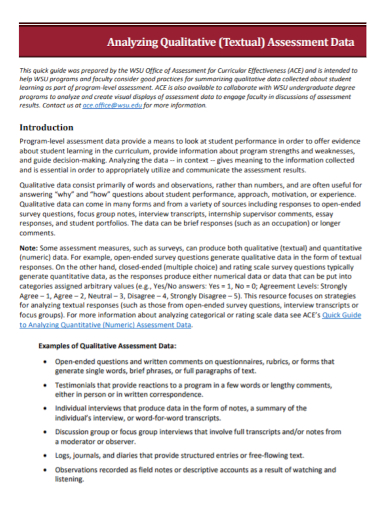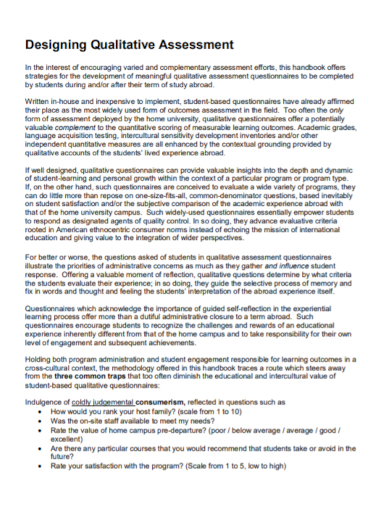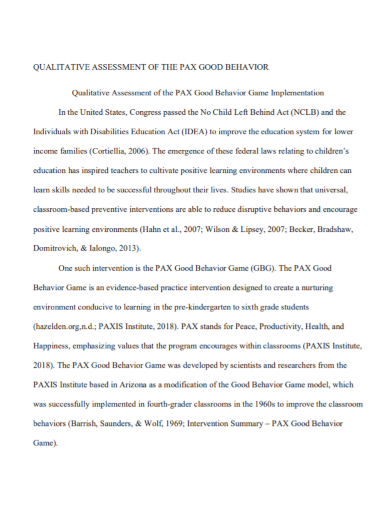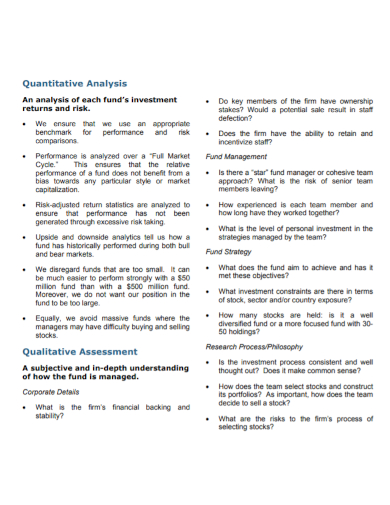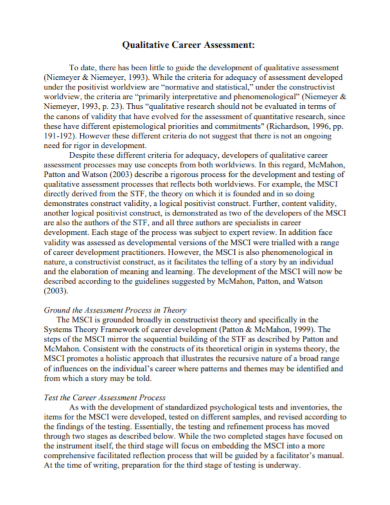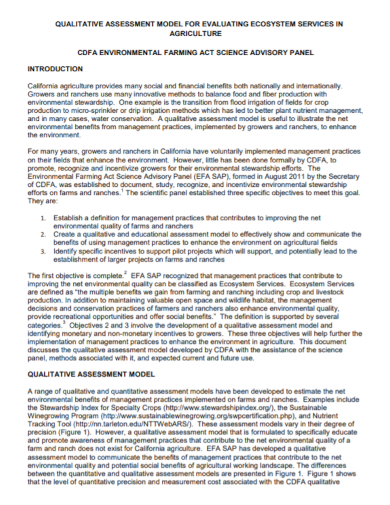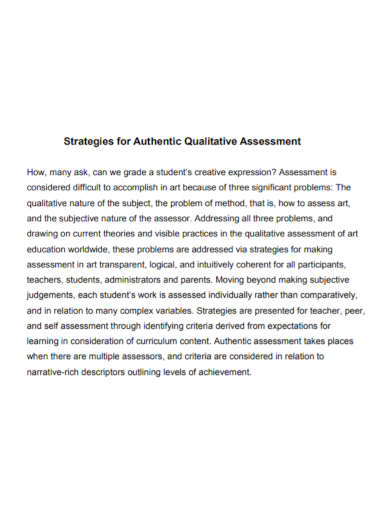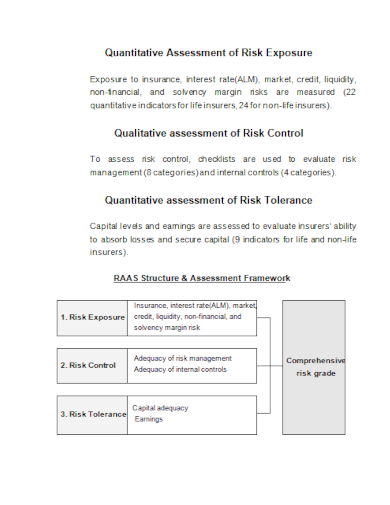Qualitative assessments are something that is usually focused on understanding how people tend to provide meaning and experience over the environment. It has a narrow scope and is applicable to various situations and experiences. In most cases, this cannot be applied for generalization among broad situations. Of course, this is quite different to that of a quantitative type of research and assessment. As a qualitative method, it would help employ the researchers in using the primary means of collecting a data like interviews, observation, and focus group. Qualitative is also something that is inductive in nature that could lead to a development of a specific theory.
10+ Qualitative Assessment Samples
1. Qualitative Data Assessment
The data for a qualitative analysis would usually come from the result of a framework. When you are applying a qualitative method to outcomes-based assessment, you are not just focusing on the use of an inductive approach. It is because you are more on determining whether the desired outcome has been identified or not. Moreover, the application itself of those methods can yield in having a rich findings for the said outcomes-based assessment.
2. Designing Qualitative Assessment
3. Good Behavior Qualitative Assessment
4. Qualitative Analysis Assessment
5. Qualitative Exposure Assessment
6. Qualitative Evaluation Assessment
7. Qualitative Career Assessment
8. Qualitative Environmental Assessment
9. Company Qualitative Assessment
10. Strategic Qualitative Assessment
Qualitative assessment is good to apply when you are not having enough time, money, and/or data to perform the quantitative assessment. Most reason why there could be a lack of data is because of the uniqueness of a particular risk which may eventually include unusual threats or a one-of-a-kind asset.
11. Qualitative Risk Control Assessment
A qualitative assessment can be based on a particular judgment, experience, or knowledge from others in the assessment team. Some methods would include:
- Delphi method – this method presents the procedure for a specific panel of experts in order to reach a consensus without having to meet personally.
- Modified Delphi method – this includes extra steps such as providing a validation about the expertise of the panel members and allowing more personal contact.
- Brainstorming – this is less structured that only requires a group leader who would establish rules and gives guidance to the experts along the process. There are two phases to undergo. The first phase will let you provide unlimited ideas without having to assess if they are practical or not. The second phase is all about ranking the ideas based on its practicality and profitability.
- Storyboarding – this refers to the act of turning the processes into panels of images so that it can be easily understood and discussed.
- Focus groups – this encourages more panels of users who would perform an evaluation to state their likes and dislikes about the safeguard being evaluated.
- Surveys – this is considered to be an initial gathering tool. The results can influence the content of the other methods of evaluation.
- Questionnaire – this would limit the response that you can get from the participants.
- Checklists – this ensure that the safeguards being evaluated would cover all the aspects of the threats and this aspects can be categorized as mandatory, important but can live without, and nice to have.
- Interviews – this method is useful especially in the early stages of an evaluation. They usually follow surveys in order to obtain a free range of responses.
FAQs
What are the qualitative assessment tools?
Some of the tools are case study, document review, focus groups, interviews, mixed-methods, needs, program review, and rubric.
What is the role of a rubric as a qualitative assessment tool?
The rubric serves as the guide for the performance evaluation, ability, and effectiveness that can be applied to a specific domain. This is usually made up of definitions, criteria for measuring the quality of work, and the scoring method that would provide an indication of the level of performance.
What are the characteristics of a qualitative assessment?
This includes naturalistic inquiry, inductive analysis, holistic perspective, personal contact and insight, dynamic systems, unique case orientation, context sensitivity, empathic neutrality, design flexibility, qualitative data, and summary.
If you want to see more samples and format, check some of the qualitative assessment samples and templates in the article to be guided.
Related Posts
FREE 10+ Event Risk Assessment Samples in PDF | MS Word
FREE 10+ Joint Assessment Samples [ Strategic, Risk, Needs ]
FREE 10+ Teleworker Self-Assessment Samples in PDF | DOC
FREE 10+ Market Assessment Samples in PDF | MS Word
FREE 10+ Quality Risk Assessment Samples [ Control, Assurance, Management ]
FREE 6+ Immediate Termination of Lease Agreement Samples in MS Word | Google Docs | Apple Pages | PDF
FREE 10+ Qualitative Risk Assessment Samples in PDF | DOC
FREE 10+ Comprehensive Needs Assessment Samples in PDF
FREE 10+ Evaluation Quality Assessment Samples [ Self, Loss, Data ]
FREE 10+ Promotion Assessment Samples [ Health, Self, Employee ]
FREE 10+ Environmental Impact Assessment Samples in PDF | DOC
FREE 10+ Employee Competency Assessment Samples in PDF | DOC
FREE 10+ Safety Assessment Samples [ Home, Health, Risk ]
FREE 10+ Change Impact Assessment Samples [ Management, Control, Request ]
FREE 10+ Staff Assessment Samples [ Workplace, Health, Risk ]

